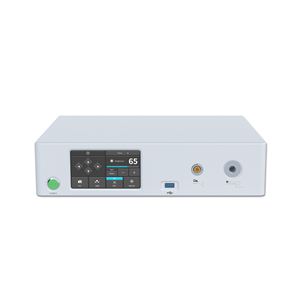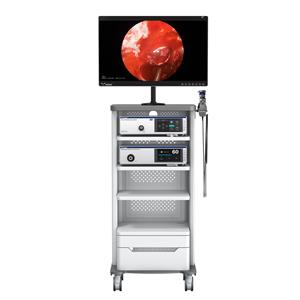What Is Colposcopy Test?Why Do Colposcopy?
What Is Colposcopy Test?
Colposcopy is a microscope that magnifies the epidermal tissue of the cervix or genitals, combined with the light source and filter, to clearly examine the cervix and genitals, so that the doctor can observe the changes in the cervical epithelium and blood vessels to diagnose whether there are abnormalities At the same time, determine the severity of the lesion. If necessary, a biopsy through a colposcopy can be used to obtain the most accurate diagnosis as a basis for treatment. Carry out location biopsy on suspicious parts to improve the diagnosis rate of cervical disease and genital disease. There are two types of colposcopy: optical colposcopy and digital colposcopy.
Why do colposcopy?
If the doctor thinks there may be a problem with the cervix, he will recommend a colposcopy. Possible problems include:
Abnormal cervical smear results;
An abnormal appearance of the cervix was found during pelvic examination;
Inspection found to be infected with human papilloma virus (HPV);
Unexplainable bleeding or other problems occur.
Doctors can check for cervical cancer, vaginal cancer and vulvar cancer through colposcopy. After obtaining the results of the colposcopy, the doctor will determine whether other tests are needed based on this.
How to perform a colposcopy? Methods of colposcopy:
●Clean the product first. The probe should be wiped and disinfected with medical alcohol before and after use.
●Turn on the instrument, set the image in the real-time display state, and prepare for inspection;
●Within 24 hours before the examination, there should be no vaginal operations, including washing, examination, drug application, and sexual intercourse. Those with inflammation should be controlled first;
●Let the subject take the bladder lithotomy position, and use the vaginal dilator to expand the vagina to expose the cervix (not dipped in lubricant to avoid affecting the observation);
●Wipe off cervical secretions with a cotton ball of normal saline (do not rub with force, so as not to cause bleeding and affect the observation);
●Move the camera to about 30-40cm away from the cervix and about 25-35cm away from the vulva, adjust the focus, and zoom in on the image for observation.
●Sometimes, in order to further distinguish the squamous epithelium or columnar epithelium on the surface of the cervix to understand the contraction response of blood vessels and to determine the nature of the lesions on the surface of the cervix, some drugs must be applied to the surface of the cervix to make the image clearer and more conducive to diagnosis;
(1) 3% acetic acid solution: the most commonly used solution of this concentration after coating the cervix, the columnar epithelium quickly edema and whiten, showing a typical "grape bunch" change, but the squamous epithelium does not have this phenomenon, and the squamous epithelium and the columnar junction change It is very clear; it can also be seen that the blood vessels contracted and then expanded after the application of 3% acetic acid solution. Punctate or spiral blood vessels were also seen, but gradually became blurred after a few seconds; Mouth" shape.
(2) Iodine test: Use a sterile cotton ball to wipe off the mucus on the surface of the cervix, and then use a small cotton ball dipped in iodine solution to evenly coat the cervical fornix. Coloring is negative for the iodine test, because normal cervical or vaginal squamous epithelium is rich in glycogen, which can be stained brown after applying iodine; if it is not colored, it is positive for the iodine test, which is mainly normal cervical tubular epithelium or columns covering the erosion surface Epithelium, squamous epithelium dysplasia or epithelial cancer. In postmenopausal women, the level of estrogen decreases and the glycogen content in the cells decreases. Sometimes the iodine test may not be colored or the coloring is very light. Therefore, the iodine test is not a specific test for detecting cancer.
(3) 40%-50% trichloroacetic acid: After the condyloma acuminatum is coated with trichloroacetic acid, it immediately presents thorn-like or rod-like protrusions, and the boundary with the normal mucosa is clear. After the pseudocondyloma is coated with trichloroacetic acid, the mucosa becomes white and the surface is obviously uneven. , Rough.
●When examining suspicious parts, take biopsy and send it for pathological examination.
Note: The best time for colposcopy is 7 to 10 days after menstruation is clean. If necessary, colposcopy can also be performed at any time during the menstrual period, but it should not be performed during the period of maximum menstrual bleeding. Before the colposcopy, the subject is prohibited from vaginal intercourse, douche and medication within 24 hours.




